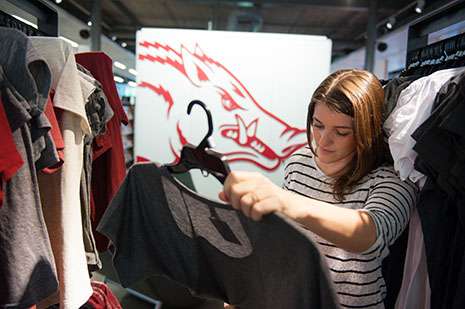'Sequential' pricing can increase retail profits, study finds

Business researchers at the University of Arkansas have conducted an in-depth study of "sequential" pricing of retail products in both online and brick-and-mortar stores and found that the ability to set prices based on real-time knowledge of customer preferences and purchase intentions can increase profits in some specific circumstances.
"We show that retailers can actually increase profits by altering prices on certain products based on customers' intentions to purchase or not purchase other products," said Cary Deck, professor of economics in the Sam M. Walton College of Business. "Think about how shopping carts offered at most online stores work. A customer clicks on an item to view information about it and decides to add it to a shopping cart or not. The mere act of selecting an item to consider, regardless of whether the customer purchases the item, provides information to the retailer. It tells the store something about the shopper's taste and what other items may be of interest to the user. Stores can then set prices on those items accordingly, based on anticipated demand."
Sequential pricing – as opposed to simultaneous pricing – occurs when a seller, aided by technology, is able to set the price for a subsequent product based on a customer's interest in or preference for an initial product. The goods are usually associated in some way. For example, a seller identifies a shirt the customer selects, regardless of purchase, and then sets or alters the price for pants that go with the shirt. Because product selection reveals information about the buyer's tastes and preferences, sellers are better able to estimate a buyer's willingness to purchase other items and tailor prices accordingly. All of this can happen in real-time during the customer's shopping experience.
The findings indicated that a sequential pricing strategy worked better than bundling products and "pure" component pricing, in which a retailer simultaneously sets a price for goods that are close substitutes. Also, when customers' values for goods were highly correlated – different books about baseball, for example – profits increased when a retailer was able to increase the price of a second product based on the customer's decision to purchase the first product.
Deck and Walton College colleagues Amy Farmer, professor of economics, and John Aloysius, associate professor of supply chain management, developed a model in which a seller sets prices for two items. The model allowed for the possibility of sequentially revising the price for the second item based upon the buyer's revealed preference for the first item. The researchers ran simulations with a range of buyer values to compare sequential pricing with mixed bundling. The model revealed that sequential pricing could outperform bundling and simultaneous pricing of individual items in certain situations.
Tracking or monitoring customer preferences and intentions to purchase is not limited to online stores. New technologies, such as radio-frequency identification (RFID), allow brick-and-mortar retailers to monitor customer preferences in real time. And customers do not have to actually purchase an item to demonstrate interest. Individual RFID tags can inform retailers that an item has been taken off a shelf or removed from a fixture.
The ability to track individual items has improved inventory and security, but it has also enabled stores to identify which items a buyer intends to purchase at a given price, just as placing an item in an electronic shopping cart has done for an electronic retailer. Whether online or in an actual store, the new technology allows sellers to individualize prices while the customer is shopping.
The researchers study was published in the journal Information Systems Research.
Journal information: Information Systems Research
Provided by University of Arkansas



















